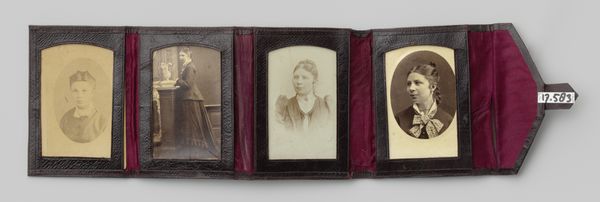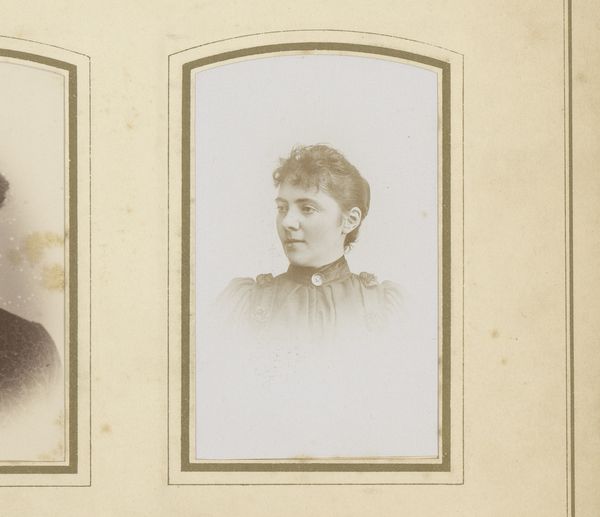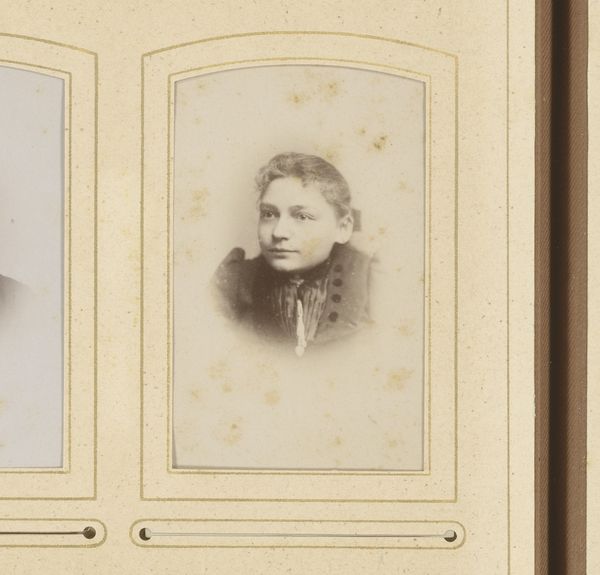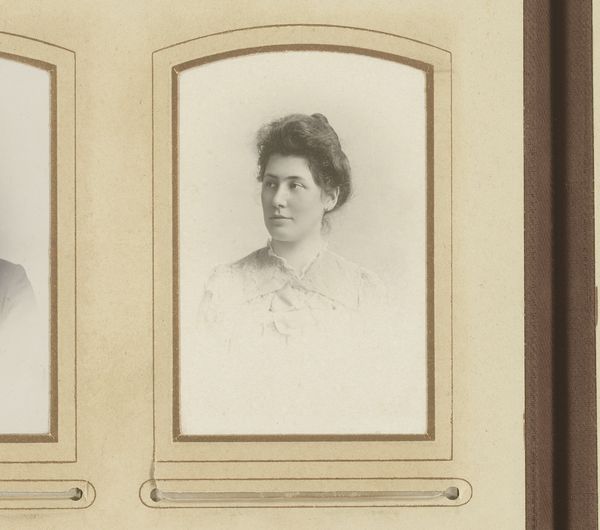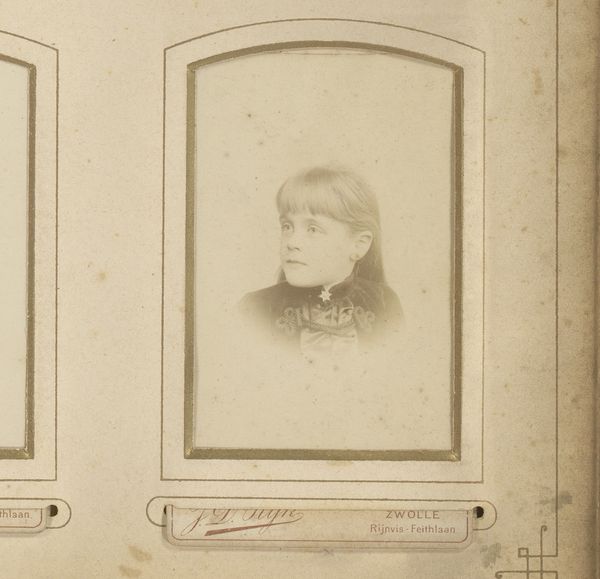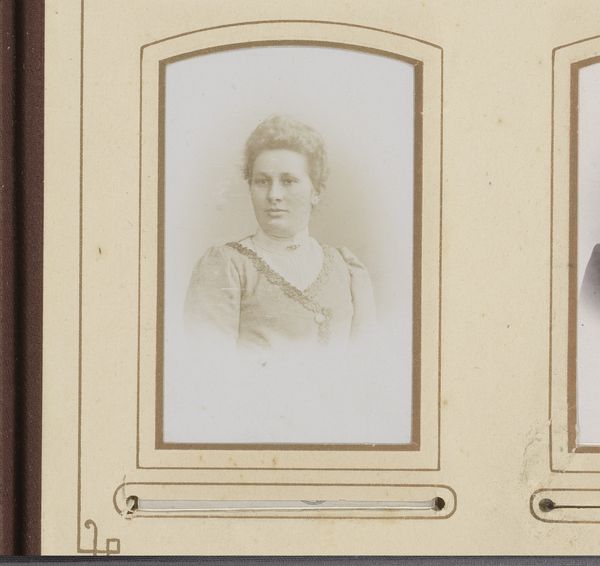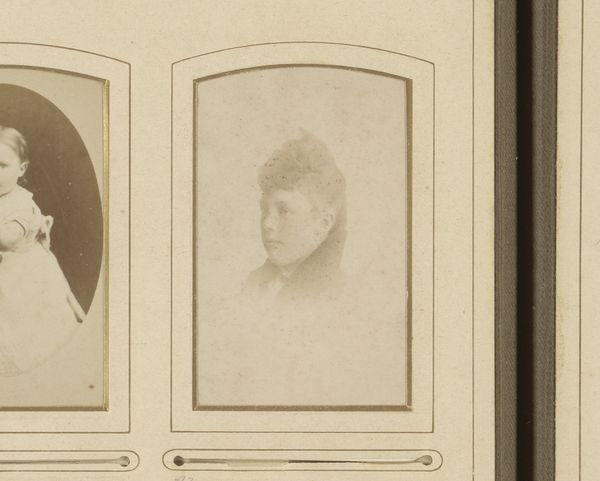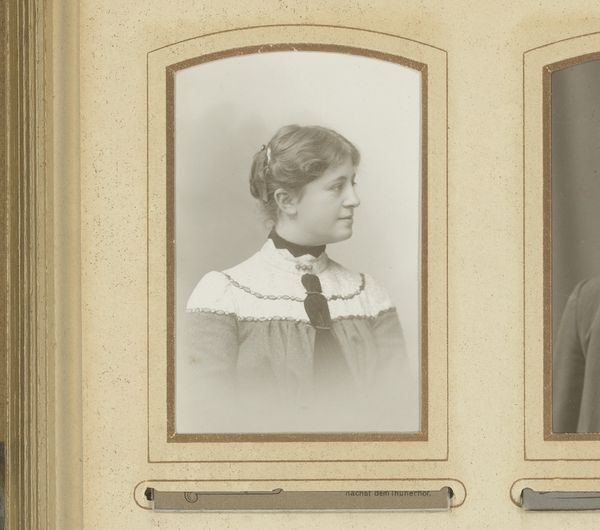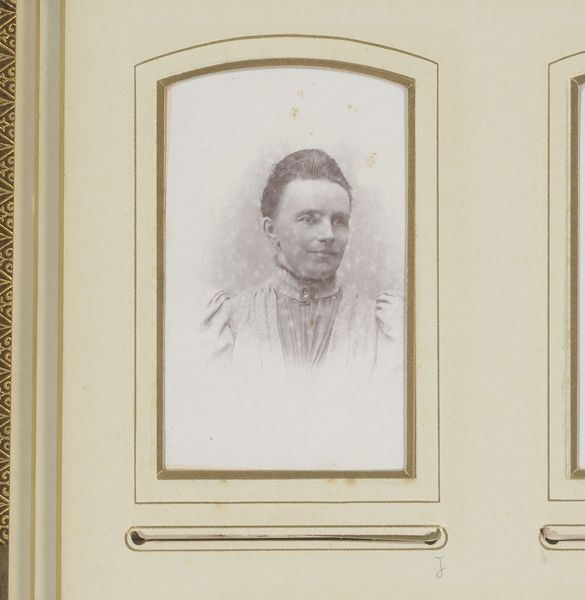
Album met portretten van Constant Willem Lunsingh Scheurleer en zijn drie zonen Daniël François, Theo Herman en Floris Bastiaan 1910 - 1913
0:00
0:00
photography, albumen-print
#
portrait
#
sculpture
#
photography
#
framed image
#
group-portraits
#
albumen-print
Dimensions: height 152 mm, width 104 mm, thickness 30 mm, width 442 mm
Copyright: Rijks Museum: Open Domain
Editor: This is an albumen print photograph, dating from between 1910 and 1913, from an album with portraits of Constant Willem Lunsingh Scheurleer and his three sons. The work, by Ferdinand Robert Ebner, features individual portraits, each framed within a larger folding frame. The tones and rigid framing lend a formality that feels both sentimental and very staged. What strikes you most about this image? Curator: I am immediately drawn to the use of symmetry and repetition in this portrait. Notice how the photographer meticulously arranges the four frames, creating a visual rhythm with the father's portrait standing apart. The formal composition and lighting further isolate and highlight each individual. The varying tonality across each frame indicates variations in the printing process itself, a vital clue for us in analysing its formal and technical origins. What, perhaps, are the effects of the contrast? Editor: I see what you mean about the symmetry! It seems almost too perfect, making it a little unsettling. It feels so controlled. Do you think that level of control was common for portrait photography at the time? Curator: Control, yes. Note the interplay between light and shadow which enhances depth and adds structure. Look how the sharp focus is on each face, creating a defined structure and isolating them into almost symbolic representations of family, rather than candid portraits of individuals. Observe also how the negative space defines a central visual corridor. Does that influence the viewing experience in any way? Editor: Definitely. I hadn't noticed the central space until you mentioned it, but it keeps drawing my eye back in. Seeing your points about the photographic techniques, I appreciate the construction of the work beyond just seeing it as a straightforward family portrait. Curator: Precisely. It's in observing these formal strategies that we unearth its significance. Now consider the artist's deliberate choice to repeat visual elements across a range of subtle changes to affect our emotional and intellectual responses. Editor: This has totally reshaped my perception of early photography. Thank you for sharing these insights with me!
Comments
No comments
Be the first to comment and join the conversation on the ultimate creative platform.

